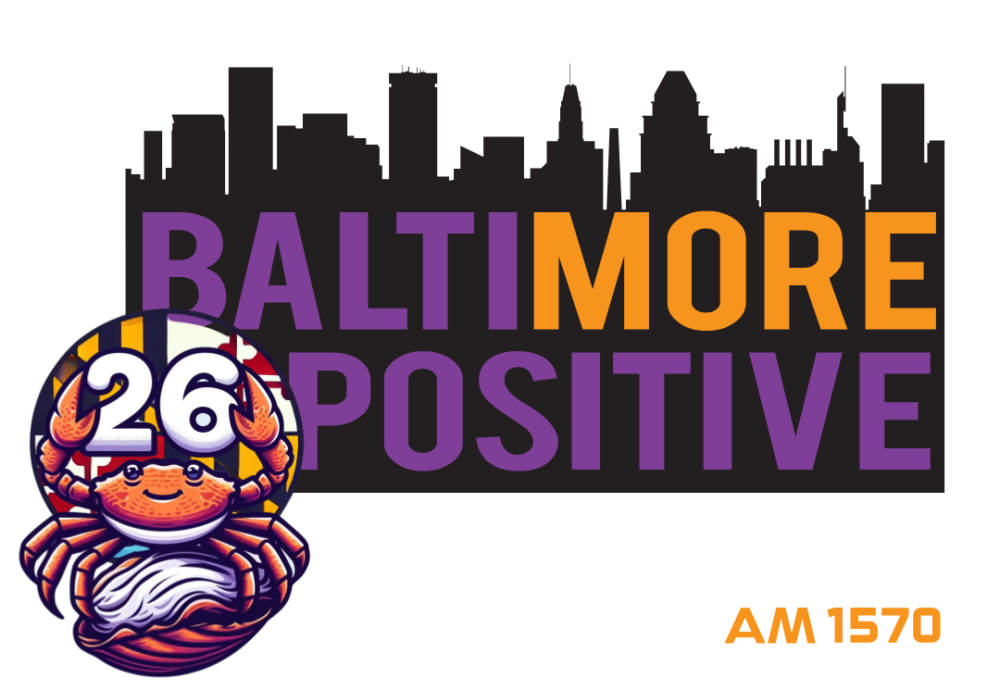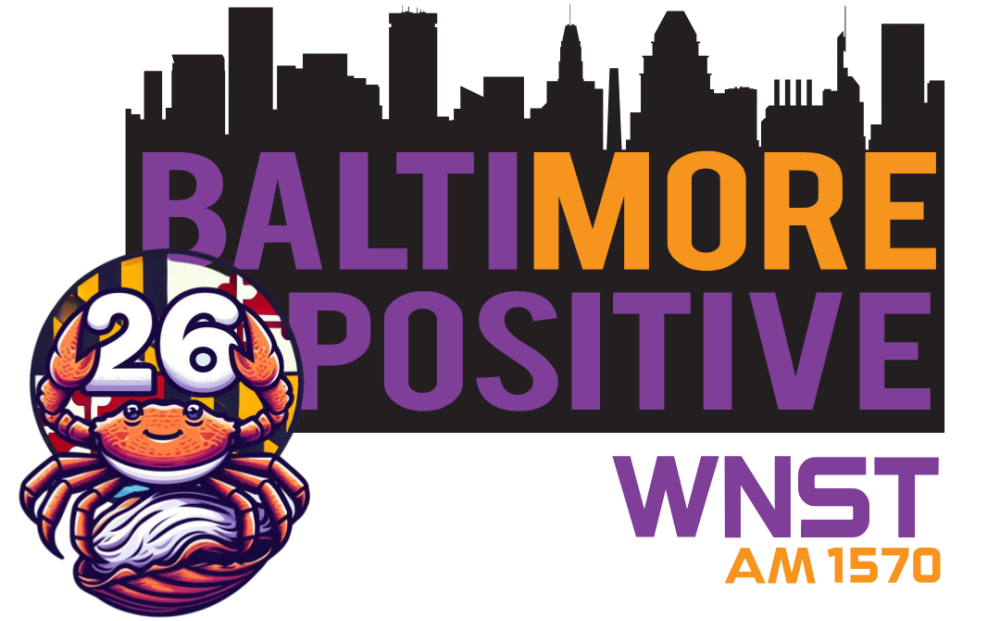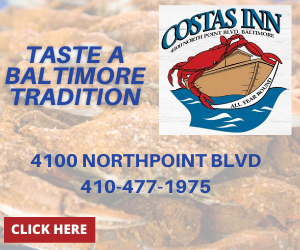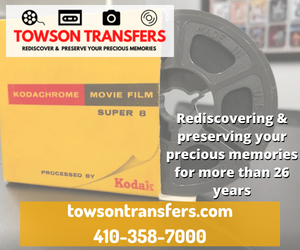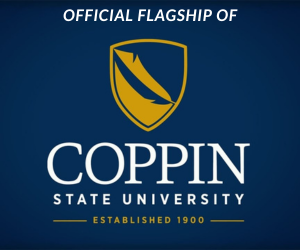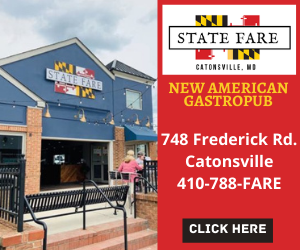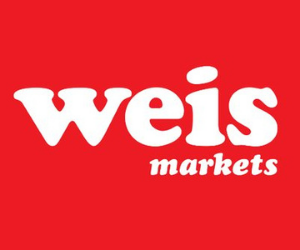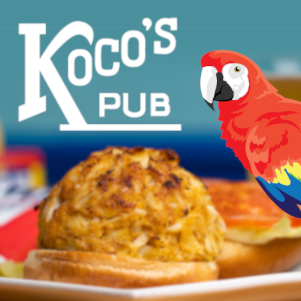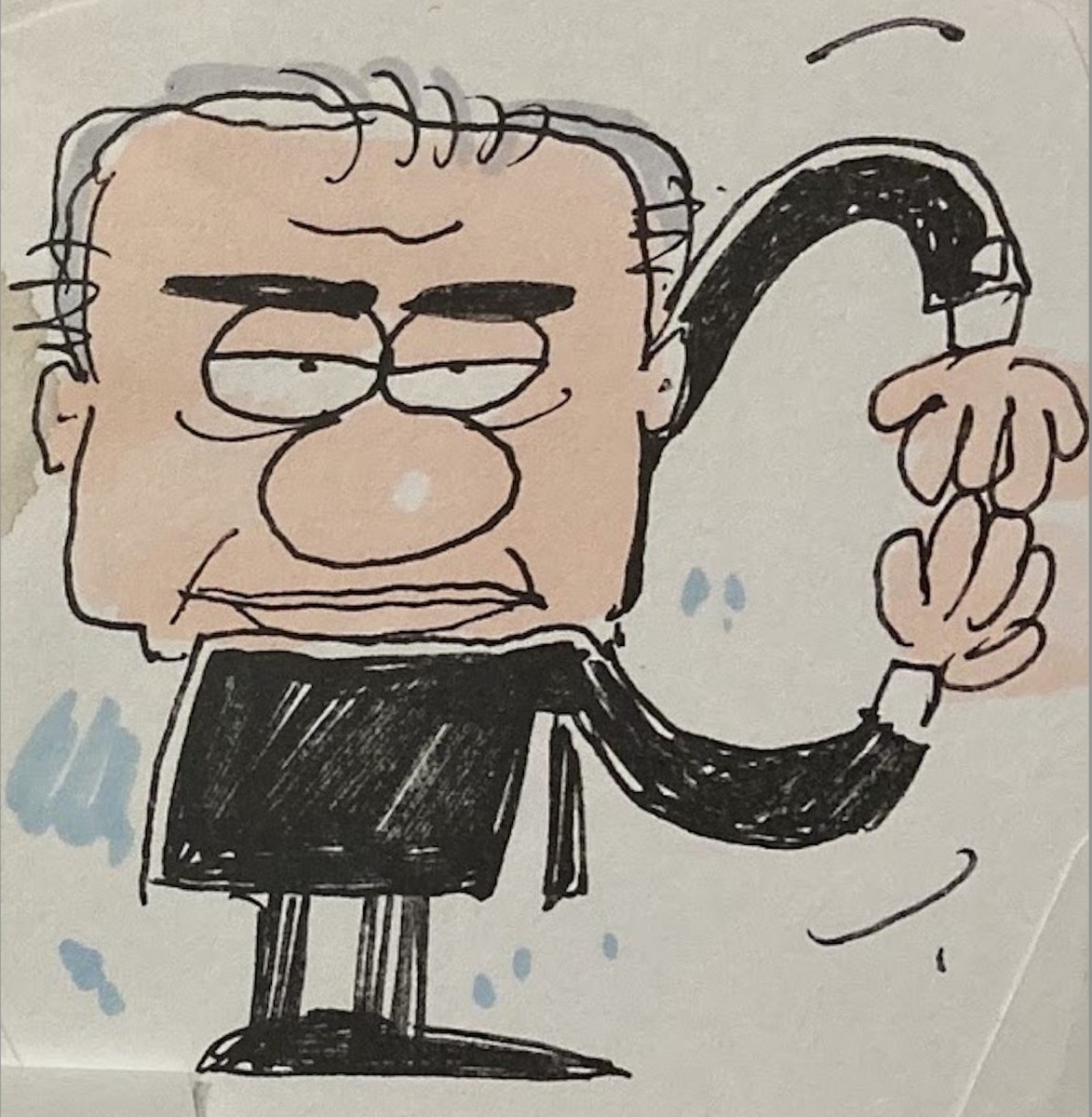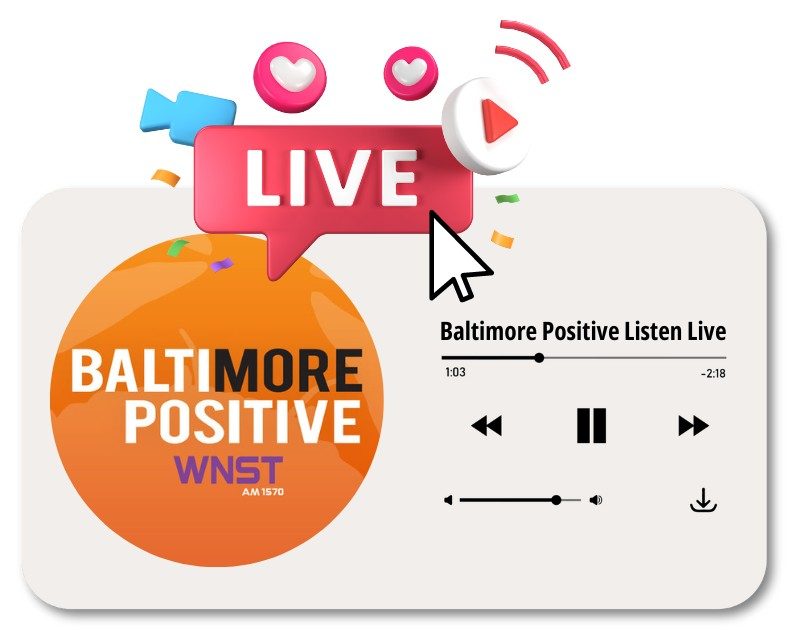“The most important part of the deal is the equity in MASN over the long term. In a few years that equity stake in the network will be worth far more than any rights fee that a Comcast or a Fox SportsNet could pay (the Washington Nationals). So they will in time have a 33 percent stake in MASN without one penny of investment. We pay all production costs, overhead, the staffing and program fees. The new Nationals get all the benefits without the risk. My goal, and I am sure it is the same for the Washington owners, is to have two very successful franchises that work together on a number of projects while being friendly rivals on the field.”
Peter G. Angelos
The Examiner
April 7, 2006
AS PETER G. ANGELOS WATCHED THE Boston Red Sox win the 2004 World Series, he was still a state of shock that his Major League Baseball partners and commissioner Bud Selig had actually done the unthinkable – placing a rival National League team into Washington, D.C. to compete with the Orioles, forever dividing the marketplace.
Insiders said they’d never seen Angelos so angry, so agitated, so betrayed and hell bent on making them pay for this decision to double cross a partner. Selig had been contrite in their conversations and vowed to somehow find a way to keep Angelos whole on the deal and the burgeoning business of television networks had become the next generation way of getting money from the masses to fund baseball growth. In the 1980s, MLB discovered sponsorships and a higher-end clientele. In the 1990s, MLB discovered leveraging municipalities for new stadia, skyboxes, club seats and premium sponsorships. Now, in the new century, it was going to be television rights and revenues derived from cable purchasers who are bundled into larger all-but-invisible packages where the “regional sports network” would garner a few dollars per month, per subscriber.
This was a way to collect automatic, “unseen” money from virtually every home in their region. They would be getting tens of millions of dollars from folks who wouldn’t even know they were funding Major League Baseball. The Lords would be getting money from people who didn’t even know what baseball was – or where to find it on the multi-channel cable dial.
Angelos had already become wise to the reality of the changing media marketplace. He didn’t really understand but it – but knew it was tangible and the true growth value in the future for baseball revenue.
It was no accident that the New York Yankees and the Boston Red Sox had more far revenue to spend on better baseball players, which exponentially aided their ability to win and keep the money machine well oiled with local interest and new-age marketing. The Yes Network was a product of a 1999 merger between the Yankees and New Jersey Nets for the express purpose of marketing a cable television channel in the New York region that would cut out the middleman – the sports cable television networks. The war in New York with Cablevision was legendary and it was big money. In 2001, the New England Sports Network (NESN), which enjoyed a near monopoly status in the region for television sports, went to the basic tier of cable, meaning far greater distribution and more money that would be used to fund the new and improved Boston Red Sox.
The same Red Sox that Angelos just watched win the World Series, who were led in part by Larry Lucchino – the former Orioles president and investor, who was the visionary for the modern franchise and building of Camden Yards, and the first employee whom Angelos unceremoniously partnered with and then ousted a month later in 1993 after his Orioles acquisition from Eli Jacobs in a New York auction.
Angelos knew all of his options, demands and “asks” in regard to what he’d be trying to retain and obtain if Selig and his MLB partners ever crossed the line and did the unthinkable – putting the Expos just 38 miles away in his backyard.
But, make no mistake about it, Angelos would’ve far preferred to have never seen the Washington Nationals born at any cost or any profit.
He abhorred the concept of D.C. baseball.
Washington baseball was truly his worst nightmare as the owner of the Baltimore Orioles. He was absolutely convinced there was no financial way to make him “whole” – and worse, he truly believed that it would drastically affect not only his team, but that the Washington team would fare no better in a market that Angelos and most everyone else remembered as a two-time baseball loser in the 1960s and early 1970s. But a lot had changed since the Senators left for Arlington, Texas in 1971 to become the Rangers.
The Northern Virginia suburbs had grown exponentially over the nearly four decades and the biggest enclave of per capita earnings in the United States fell throughout what Angelos felt was hard-earned Orioles country. Angelos valued the Washington, D.C. community for the same reasons Selig and the other MLB owners did – they smelled the size, money and disposable income. Angelos claimed that 30% of his audience came from those homes and wallets. The Orioles and Major League Baseball were a television brand that his baseball brand had cultivated over 30 years and he and his partners paid top dollar for in 1993.
Angelos felt absolutely deceived, absolutely blindsided by their lack of concern or his franchise – and felt there was no price that was too high for them simply attacking his fan base and trying to claim half of it.
Not only was Angelos out for every nickel he could get – as has been his custom in every negotiation – but Selig had effectively lost all of his negotiating leverage by placing the team at the end of September. But, in reality, with no other suitors and The Washington Post breathing down his neck, he had little choice with the Expos having played in two countries over the 2003 and 2004 seasons. Selig’s lieutenant, Bob DuPuy, initially believed that he’d be dealing with a reasonable partner in Angelos and felt that he’d get a deal worked out before the end of 2004.
But their naivete proved chillingly apparent as Angelos simply mandated outrageous terms and asks in regard to full ownership of a regional sports television network that mirrored the Yankees and Red Sox, an ownership percentage of the future D.C. team, cash up front in the deal for territorial rights and, most importantly, a floor price that was at least double the $173 million that Angelos and his partners had paid in 1993.
And Angelos wasn’t on a timetable because his threats of lawsuits and entanglements and his legendary ability to tie people and entities up in court preceded him. Major League Baseball was literally willing to do anything to not wind up entangled in a nasty lawsuit with Peter G. Angelos, who had a reputation of being nasty. Everyone in the MLB partnership had watched in horror a decade earlier when Angelos called them all names and belittled them while taking the players’ side in the 1994 work stoppage.
Angelos knew he didn’t need to do anything but remain obstinate and threaten their worst nightmare – a discovery phase of earnings and the business of baseball in a public court would threaten their institution and antitrust luxuries. So he waited, screamed with various degrees of silence and demands, and made DuPuy take several train rides down to Baltimore to be chastised more than negotiated with over the months in the winter of 2004-05.
Angelos knew he was going to get a lot or raise a lot of hell – or perhaps, both. He never believed he’d get a deal was that was truly “fair” because he thought the whole concept of a Washington, D.C. baseball team was a lousy idea for both cities. It really wasn’t about money – it was about his position and ideology.
He was also swimming in debt that the Orioles owed him and his partnership. This was his one chance to settle all debts with one negotiation and right his financial ship with the ballclub that he was struggling to keep both competitive and semi-solvent.
But, once there was going to be a team in Washington, D.C. – and he watched as the Nationals signed players, naming Orioles legend Frank Robinson as their first manager, and put up billboards and started to sell tickets and were actively competing with his franchise between 695 and 495 on the 295 corridor – it became about the only revenge Angelos could extract: money.
The Washington Nationals were here to stay. Now, how to best capitalize on Capitol Hill baseball?
Angelos pouted, stewed, faxed, threatened, hid and waited. Opening Day 2005 was coming and they needed him. MLB had no ability or legal authority to put Nationals games on television without compliance from Angelos. And anything short of him owning that media network that broadcast the Nationals games would land them all in federal court.
Peter G. Angelos was going to make Selig and the other MLB owners pay for this transgression and this betrayal.
* * *
THE TICKETS WERE SOLD. THE BUNTING was laced throughout a gussied up R.F.K. Stadium and the Washington Nationals were all set to welcome President George W. Bush to throw out the first pitch on April, 4, 2005, but the score wasn’t settled. Far from it, as far as Peter G. Angelos was concerned.
The financial uncertainties and the new reality of this Washington, D.C. baseball team forced the Orioles to back off of signing Carlos Delgado or over-bidding with the Yankees for Carl Pavano during the winter of 2005.
For Angelos, now more than $175 million “out of pocket” in checks written for Orioles players, shortfalls and losses over the first 11 years, and faced with life after the local baseball monopoly, it was a time of great strife.
Angelos bought the team to be loved and found it hard to leave the office anymore because he knew the fans of the Orioles disliked him. He was embarrassed but would never show it. He rarely showed his face anywhere around his hometown.
Angelos bought the team to beat his chest with local pride and there was very little pride left associated with being the owner of the lowly Baltimore Orioles. On the field, he knew he didn’t have the financial resources to keep up with the Yankees and Red Sox. The Orioles had finished 23, 30, 36.5 and 32.5 games out of first place in AL East over the previous four years and hadn’t played a meaningful game since 1997. It had become a very unfair fight.
And now his MLB partners, who he’d helped negotiate a 2002 deal that saved ownership tens of millions of dollars, decided to park the Montreal Expos 38 miles from the front doors of Camden Yards and then wanted to talk about “a fair settlement.”
Angelos didn’t want a settlement. He wanted punitive damage from his MLB partners. He wanted to extract every penny and more.
Angelos had a study by the Deloitte consulting firm that estimated the Washington Nationals would cost his franchise between $20 and $30 million in annual revenue. And that would be just over the first 10 years. That math looked like a quarter of a billion dollars before 2015.
Any talk of Angelos simply taking $100 million or perhaps, $150 million, was unacceptable to him. And he knew he had the ability to create anarchy – either internally or within the courts.
The negotiations with commissioner Bud Selig’s appointee Bob DuPuy were not going well at any point and in the end, Angelos forced the MLB owners into a deal far worse than they could’ve possibly imagined when they foolishly moved the team in September 2004 and decided to negotiate with an irate, bloody-thirsty “partner” who had a reputation (and one they had seen work against them in 1994) for walking his own path and fighting as dirty as anyone even among the filthiest of filthy sports owners on the planet.
On March 13, 2005, just four days before Congressional leaders would have Selig and 10 players under oath to Capitol Hill to discuss performance enhancing drugs in baseball and its effect on statistics, history and health of young players, Angelos and the Orioles took out an ad in The Washington Post that voiced his concerns and served to enrage Washington baseball fans even more.
“For over 30 years the Orioles have had the exclusive rights to a geographically defined television market that stretches from Pennsylvania through all of Maryland, the District of Columbia, Virginia, Delaware, portions of West Virginia and as far south as Charlotte, North Carolina.
When the Orioles were purchased by the current ownership group in 1993, these rights were a material element of the franchise value as reflected in the then-record purchase price of $173 million.”
As to the broadcast of Nationals’ game, we have repeatedly advised MLB that we would welcome the Nationals to our regional sports network and are prepared to televise Nationals’ games throughout our television territory.”
The Orioles are prepared to offer a fair and appropriate fee to the Nationals in the many millions of dollars annually for the telecast of their games.”
Virtually every writer and legal critic in the sports world was saying that Angelos hadn’t an iota of proof that he had any legal rights to Washington, D.C. There were no bylaws or promises made – real or implied – that the Orioles were a part of any territory outside of a few counties that surrounded Baltimore City, where they played their home games since 1954 and where twice a Washington, D.C. team resided.
It was echoed many times that Angelos didn’t really have a legal leg to stand on in this debate. So, then, why wouldn’t Selig just tell him to sue MLB and declare war?
Neil deMause of Baseball Prospectus summed it up:
The ostensible crux of this whole debate is TV rights. While innumerable press reports have asserted that the Orioles have “territorial rights” to D.C., this was never the case: according to baseball’s bylaws, Baltimore territory includes several suburban counties in Maryland, and stops at the state line.
What Angelos does have are the more nebulous “cable TV rights,” which for the O’s extend clear to the Carolinas. This is par for the course in the monopolistic world of MLB, wherein every cable system in the country can be assigned to a specific team, even ones hundreds of miles from home plate. They are, however, provisional rights –they’re owned by MLB, and only granted to teams at the whim of the commissioner and the executive committee. “My own reading of it,” says baseball economist Andy Zimbalist, “is that Angelos doesn’t have any legal grounds to pursue this at all.”
Why, then, you may ask, is Bud Selig wasting his time negotiating with Peter Angelos, then? Just give the man some lovely parting gifts, and send him away to play the home version.
The problem is that Angelos is holding MLB’s traditional kryptonite: the threat of an antitrust suit. Because the very existence of the cable-rights pie is a function of MLB’s monopoly powers, an Angelos lawsuit, even if it ultimately failed, could force Selig to air some laundry he’d prefer to keep under the bed.
Zimbalist later wrote a book called “In The Best Interests of Baseball,” where he covered the Selig decision in great detail.
Selig may be willing to play hardball with cities, but he was reluctant to do so with Angelos. For one, Angelos was threatening legal action. However dubious his legal case may have been, Angelos would have filed it locally and probably received a sympathetic hearing, at least initially. Any legal action would also have brought document discovery. Discovery in this case could potentially have involved any documents related to team ownership, MLB’s relations with host cities, owner relations with the central office, or team finances. Some of these documents may be particularly sensitive, embarrassing, or even indicting.
Selig was also quoted as saying: “I really believe in the partnership concept, which is a thing I’ve tried to sell. As [former Tigers owner] Mr. Fetzer used to tell me: “We want to beat each other’s brains on the field but Buddy, off the field, we’re partners.” I know it sounds trite, but it is true. Look, Art Rooney understood it. George Halas understood it. Wellington Mara understood it and so on and so forth. So now I see about Peter Angelos. Well, this is…they’re dumping a team twenty miles away; you can make all the compelling arguments; I’ve heard them all, on all sides, and I know that some people think I’m bending over backwards. But I think we are partners off the field and I do think that in unusual circumstance where it becomes obvious there was some economic damage that we ought to think about something that at least is fair.”
On March 31, 2005, there was finally détente. Just three days before the Washington Nationals would play their first game, the owners of Major League Baseball announced an agreement with Peter G. Angelos that would guarantee gobs of revenue into perpetuity for the Baltimore Orioles.
This deal, unprecedented in the history of modern sports, made Angelos far wealthier on this one gifted transaction than anything he’d ever earned in baseball or believed that he’d ever earn by buying the Baltimore Orioles in 1993 with an original cash layout of $29 million.
And after more than a decade of mismanagement – on the field, off the field, in the community and with the media and repeated lies and laywer speak – he was made whole with power threats and bargaining in the spring of 2005.
The birth of the Washington Nationals would be the greatest thing to ever happen to his baseball – or legal – bottom line over the next decade and beyond.
The control, the sheer volume of revenue and hidden new revenue made the others in MLB sick with envy and/or anger toward Selig for capitulating and allowing Angelos hundreds of millions of dollars of future monies, especially given the way he’d chased millions of fans away from his baseball team over his first decade of mostly awful ownership. It was insult to an injury in the minds of old-school MLB owners. After Angelos loudly and proudly sided with the players during the 1994 strike, many MLB owners still had great disdain for him and still viewed him as an uppity newcomer who didn’t even like the sport, its business practices or long-standing, traditional ownership practices and policies.
He was never a member of “the club” and now had cashed in on everything The Lords of MLB had built over a century.
This decision by Selig was a virtual spigot of revenue that gave Angelos the lion’s share of all of the television revenue created by the Washington Nationals via a regional sports network that would be known as the Mid Atlantic Sports Network, or MASN. This network, owned 90% by Angelos and backing up slowly over 25 years by 1% a year after a five-year holding period, would control all of the rights to both Orioles and Nationals games. Both teams would be given the same television money from the deal – a poison pill designed by Angelos, which guaranteed that D.C. would never be the “bigger” market or the wealthier team that could afford the best players in the sport. But, outside of the franchises, this equitable cable television payment plan was a 90-10 revenue stream split on the profits that favored Angelos over whatever ownership group Selig and the MLB owners would wind up selling the team to once it was established in D.C.
The deal was so weighted toward Angelos and against the Nationals that many questioned what sane businessman would want to purchase the shiny new team in D.C. from Selig and MLB knowing that the Orioles owner would essentially be their media godfather and landlord.
It was also very unclear as to who would decide what was a “fair” annual payment to both clubs for cable television rights once the deal reset payments after five years. Who would decide what amount would be paid to the Washington Nationals and Baltimore Orioles each season after 2011? And no one in the room could dare predict what a cash cow MASN would become in the coming years.
This would become the topic of lawsuits between MASN, the Baltimore Orioles, Major League Baseball and the Washington Nationals, who would wrangle for more than a decade over the annual value of the broadcast rights of the infant team in the nation’s capital.
Angelos was also given a floor price of $360 million, or nearly $200 million more than he paid in that hot, sweaty courthouse in New York in the summer of 1993. He could literally take a $360 million check (with an accelerated adjustment in future years) at any point from the MLB owners and walk away – doubling his investment while keeping the new cable television entity and all its meaty revenue.
He had spent 11 years shamelessly wrecking virtually every aspect of the Baltimore Orioles, embarrassing himself and the franchise in almost every imaginable way and struck gold in a seemingly unending jackpot full of riches because he simply threatened Bud Selig and his MLB partners. Before this unprecedented “gift” from the MLB owners, many esteemed legal eyes deemed Angelos’ case a mostly frivolous lawsuit that might’ve at best netted him a few hundred million in a one-time payout to abandon the Washington area media rights. That huge sum would’ve barely covered how much money he’d bled since 1993 through his brazen mismanagement and general wrong doings.
When Angelos told Jim Williams of The Examiner in 2006 “in some ways I have been a poor owner,” many nodded in agreement.
Keep in mind: Angelos was at least $175 million upside down in real money that came from his personal wealth and law practice. Of course, it was offset by the rising value of the franchise, but putting a team in Washington, D.C. would surely devalue his franchise and its footprint significantly if the team were sold on the open market. And the Orioles would’ve been very unattractive and massively devalued to any buyer if the team wasn’t attached to the cable television network, which was where the gold would be in any baseball deal in the future.
Any baseball fan concerned with winning on either side of the Baltimore/Washington fence would have grave concerns now, considering Angelos had enough money – and apparently enough power – to not care much about winning baseball games moving forward. All of the money was guaranteed. The Orioles didn’t need to win or try to win to be financially secure.
Angelos had long predicted the demise of both markets if baseball was housed in both cities. Now, he was in a unique position to guarantee more profit by spending less. And there was little doubt that he’d ever be running back out into the free agent market to buy the likes of Albert Belle or Sidney Ponson now that the profits were guaranteed and the value of the franchise was eternally protected by MLB.
Sure, he’d made the Orioles perennially profitable that day in obliterating Selig and the entire MLB team in the negotiation, but it still didn’t account for his complete inability to build a decent baseball franchise. And guaranteeing Angelos’ earnings didn’t remove any incentive for him to spend any of his new money on quality Major League Baseball players when it was just as easy to pocket the new revenue stream. It was later learned with leaked documents that the Pittsburgh Pirates and Florida Marlins owners had been pocketing tens of millions of dollars annually from monies that the MLB owners were sharing from rich teams to help “small market” teams compete.
Baltimore fans had every reason to be leery.
Meanwhile, Washington fans were irate that Angelos would essentially be controlling many aspects of how the new Nationals could do business simply because he controlled their television rights and cash flow. Many in the MLB community said that Angelos’ television bounty would depress the sale price of the D.C. for potential investors because the profit upside had all but evaporated for the new owners of the Nats.
DuPuy, the lead negotiator whom Angelos hammered for six months, said, “The interests of all the parties have been protected. The Orioles and their fans have been assured protection from any harm. Any compensation to the Orioles comes from the industry and not from the Nationals. We protected the Nationals. We didn’t hurt them.”
This was patently false and DuPuy knew it. The Orioles fans were not protected from an owner who had no need to try to win nor were the Nationals (and their future owners) protected from the shortfalls of legitimate revenue that they would never have at their disposal to improve the new team in a new market.
All of the significant “new money” would fall into Angelos’ pockets, away from the Orioles, where he could do whatever he pleased with the new bounty – including keeping the monies away from MLB and the general 34% “pooling” of revenues in the new era of MLB media earnings.
Selig, of course, simply issued a statement: “This agreement, I believe, satisfies the competing interests with which we’ve had to contend to place a team in the nation’s capital. From the very beginning, I was deeply concerned by the potential material effect this move to Washington, D.C., which is in such close proximity to Baltimore, would have on the Orioles, its ownership and its fan base.”
Selig offered praise for Angelos for “his desire to preserve and protect the Baltimore franchise now, and for future generations. His concerns, which he expressed often and well, were not about himself or his ownership interest, but rather to establish a means by which to ensure the future viability of the Orioles franchise.”
But the fountain of free money for Angelos had one more caveat that didn’t come to light for another month.
On April 29, The Washington Times reported:
If Angelos doesn’t own the Nationals, he sure is their “daddy.” If you need any more proof, just look at the latest revelation of the television deal Angelos has made with MLB to partner with whatever sap winds up thinking he actually owns this team.
As first reported in The Washington Times yesterday, Angelos will be due a $37.5 million payment come June 30, and another $37.5 million by June 30, 2006. Baseball will be picking up the first payment only because the team isn’t likely to be sold by June 30, but you can be sure it will be tacked on to the sales price.
For this, the prospective marks who will wind up pretending to own this baseball team will have a 10 percent piece of the Mid-Atlantic Sports Network (MASN).
What does that mean?
Angelos will get $75 million and also own 90 percent of a network that baseball believes will be worth $750 million.
This, of course, explained where the 10% of the MASN ownership stake would come from over the early years of the deal. Angelos said that MASN would be worth $750 million from the outset and $75 million represented the appropriate amount.
So here’s the recap math: Angelos was gifted a cable television network that both sides agreed was worth $675 million to him, plus $75 million in cash, plus a floor price that was $233 million more than what his partnership paid for the Orioles.
The “cost” for Major League Baseball to put a team in Washington, D.C. was about a $1 billion initial profit to Angelos – plus nearly $200 million in fresh annual gross revenue coming from MASN in the future years, while he drank in 90% of that profit in the early years.
Angelos, who brought just $29 million to the table in the summer of 1993 while chasing ownership of the Orioles at a New York auction, would now leave the sport – or his heirs would – with well in excess of $1 billion in profit no matter how the team fared on the field or at the turnstiles.
All he had to do was field a team and play the games.
The money was now guaranteed.
* * *
–– THE END ––
(Nestor Aparicio was writing The Peter Principles when his wife Jennifer was diagnosed with a rare form of leukemia in March 2014. He never formally completed the book and was waiting for the franchise to be sold – or win a World Series – to complete it and publish it in a paperback format.)
